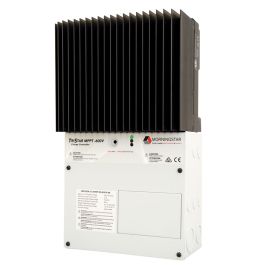JohnGalt1717
New Member
- Joined
- Dec 22, 2021
- Messages
- 102
So I've fallen victim to the Growatt scandal... and what I really always wanted was separate of everything from MPPT to inverters to AC/DC charging.
I have 8x605Watt panels in series (and I can't parallel because of major losses going to 4S2P because of shading etc.) They're 48VDC max open voltage with 14A max (theoretical). I have 4 of these series. And plan on adding another 3-4.
Ideally, I'm looking for an MPPT that will scale with ENNOID-BMS: https://www.ennoid.me/bms/gen-1 as I'm slowly building up to a 384VDC pack, but I can live with 48VDC MPPT output for now.
Does anyone know of any 450VDC or higher MPPTs on the market that aren't integrated hybrid units that are any good? Any that do more than 48VDC?
And if not, since I can, would anyone be interested in a design like ENNOID-BMS for doing a scalable MPPT design? If there was interest I might build them and open source the design for DIY. (and I'd license it for companies that want to sell it as a product for profit.)
I have 8x605Watt panels in series (and I can't parallel because of major losses going to 4S2P because of shading etc.) They're 48VDC max open voltage with 14A max (theoretical). I have 4 of these series. And plan on adding another 3-4.
Ideally, I'm looking for an MPPT that will scale with ENNOID-BMS: https://www.ennoid.me/bms/gen-1 as I'm slowly building up to a 384VDC pack, but I can live with 48VDC MPPT output for now.
Does anyone know of any 450VDC or higher MPPTs on the market that aren't integrated hybrid units that are any good? Any that do more than 48VDC?
And if not, since I can, would anyone be interested in a design like ENNOID-BMS for doing a scalable MPPT design? If there was interest I might build them and open source the design for DIY. (and I'd license it for companies that want to sell it as a product for profit.)




